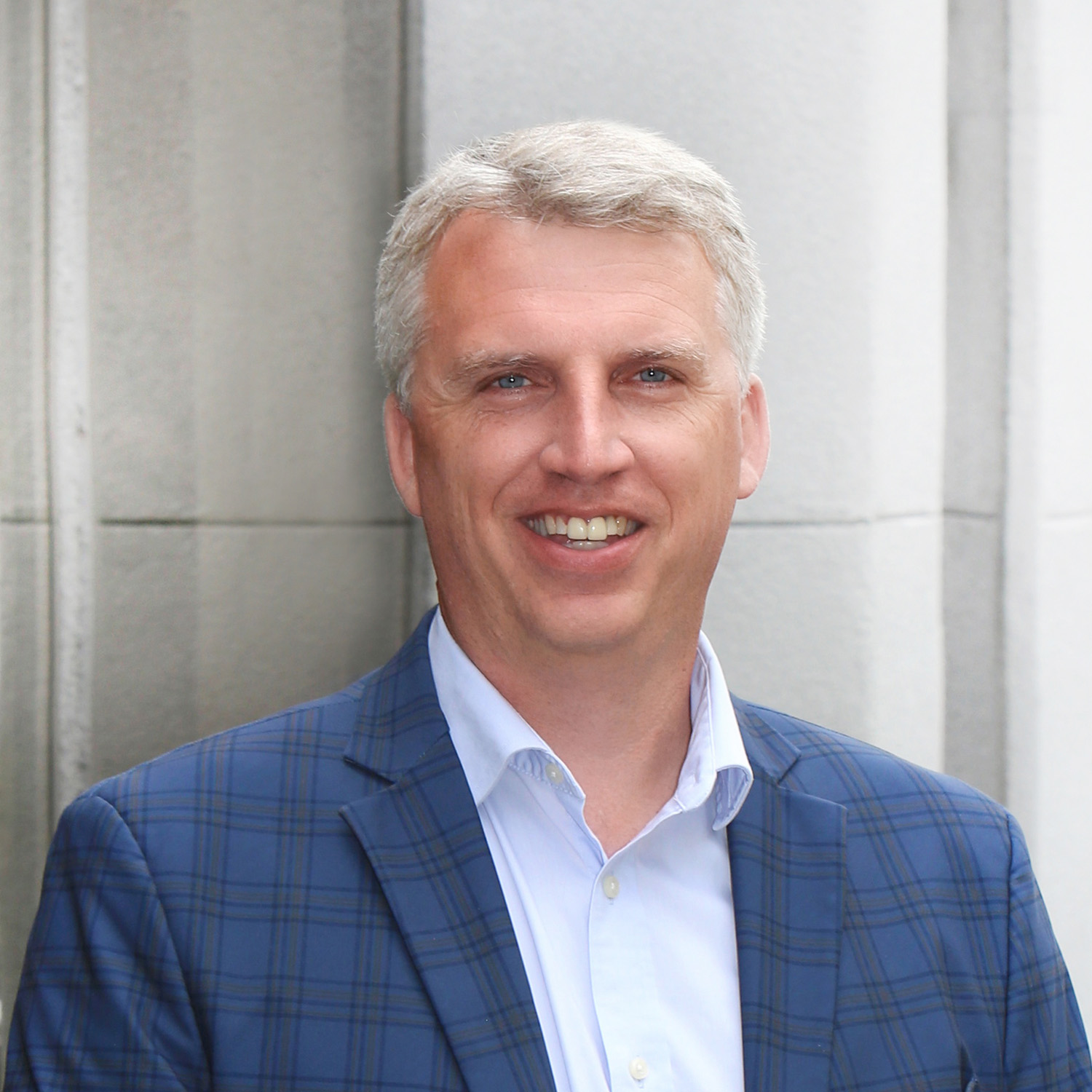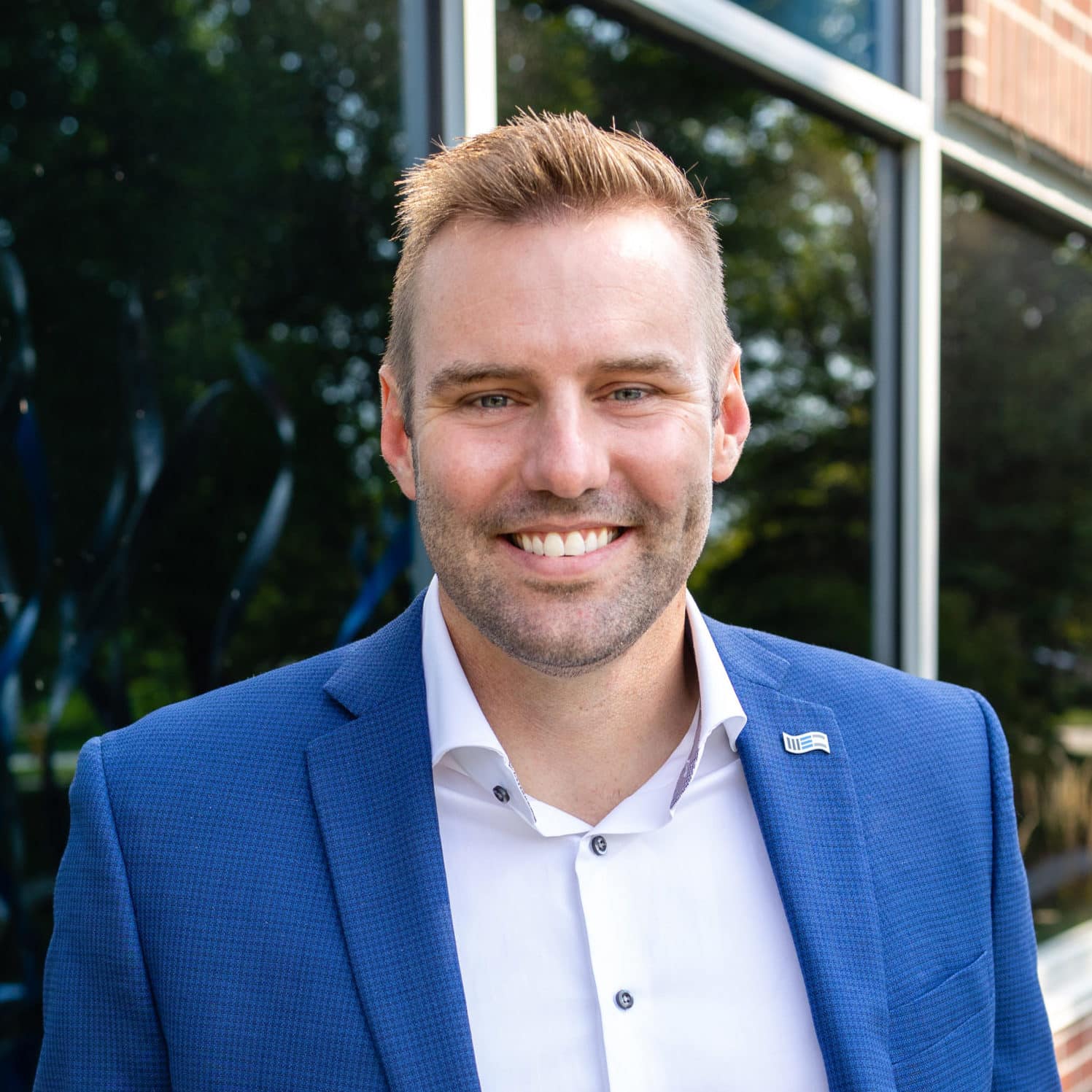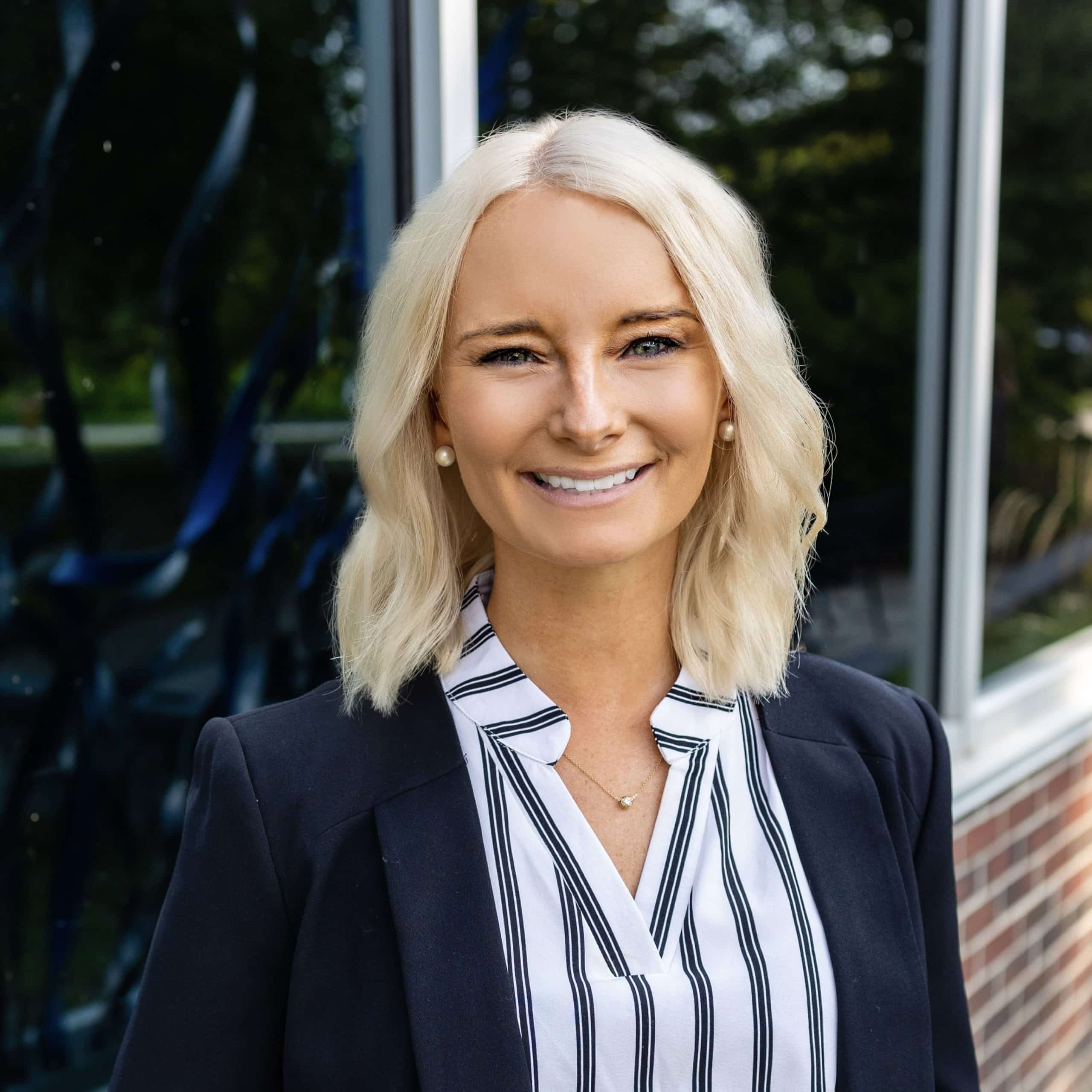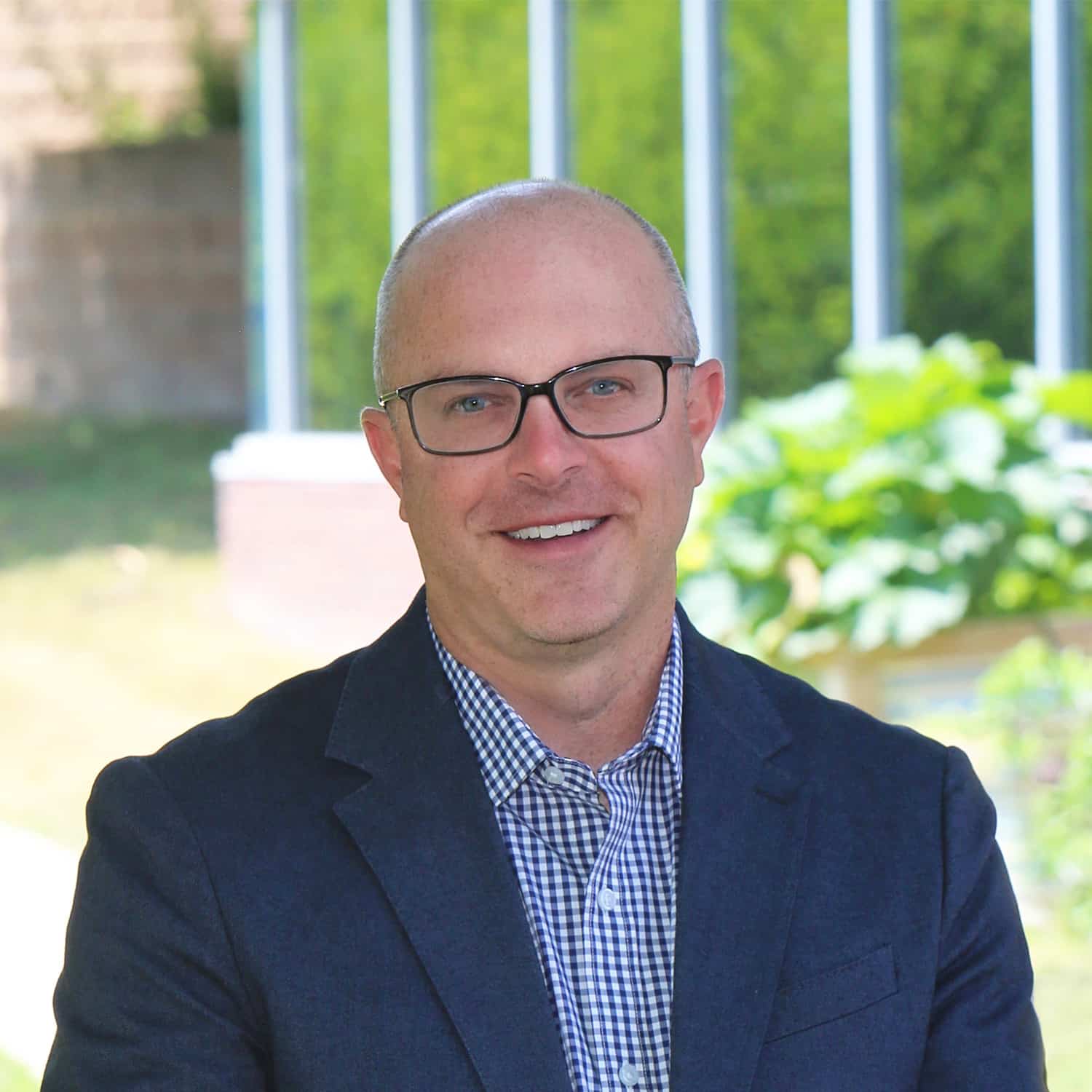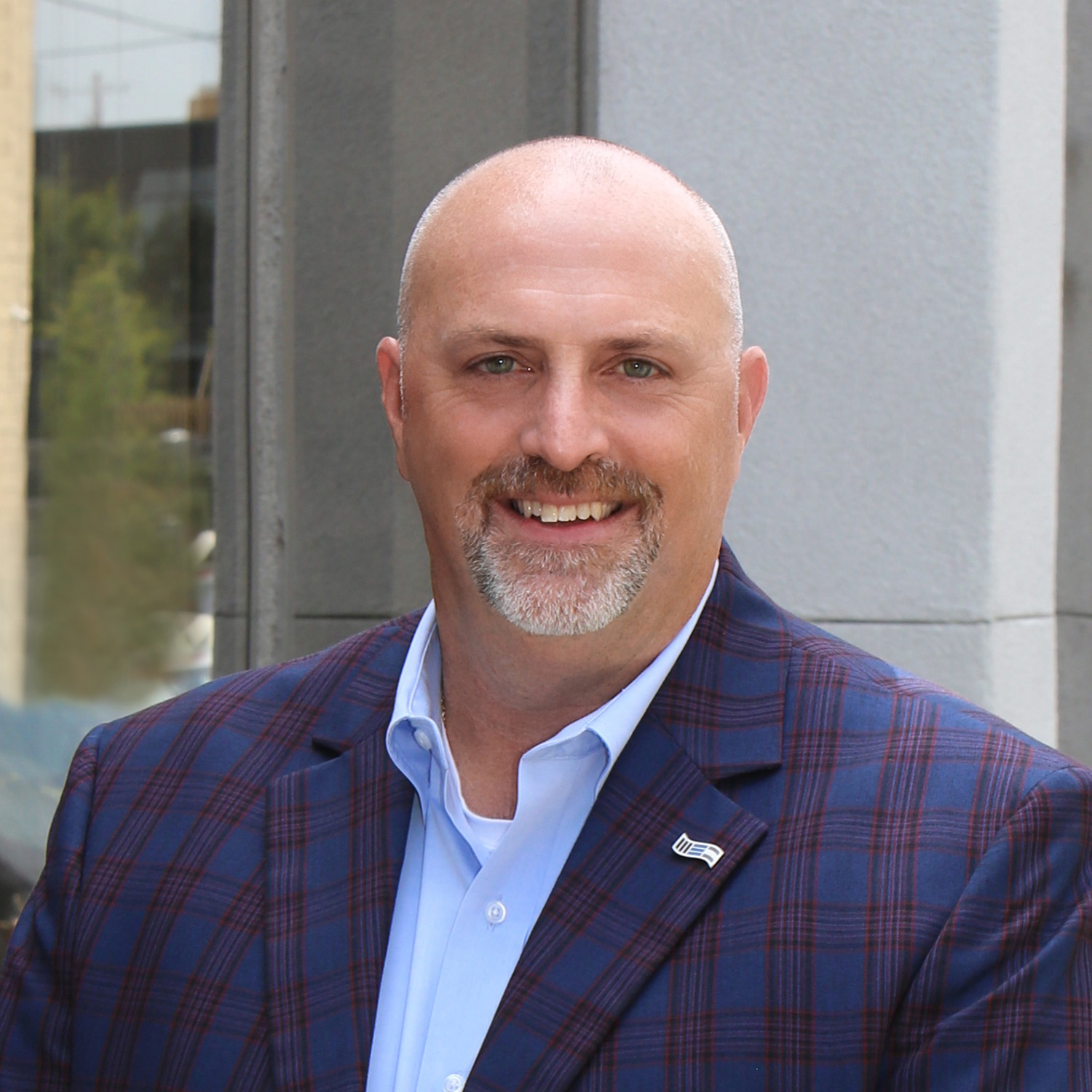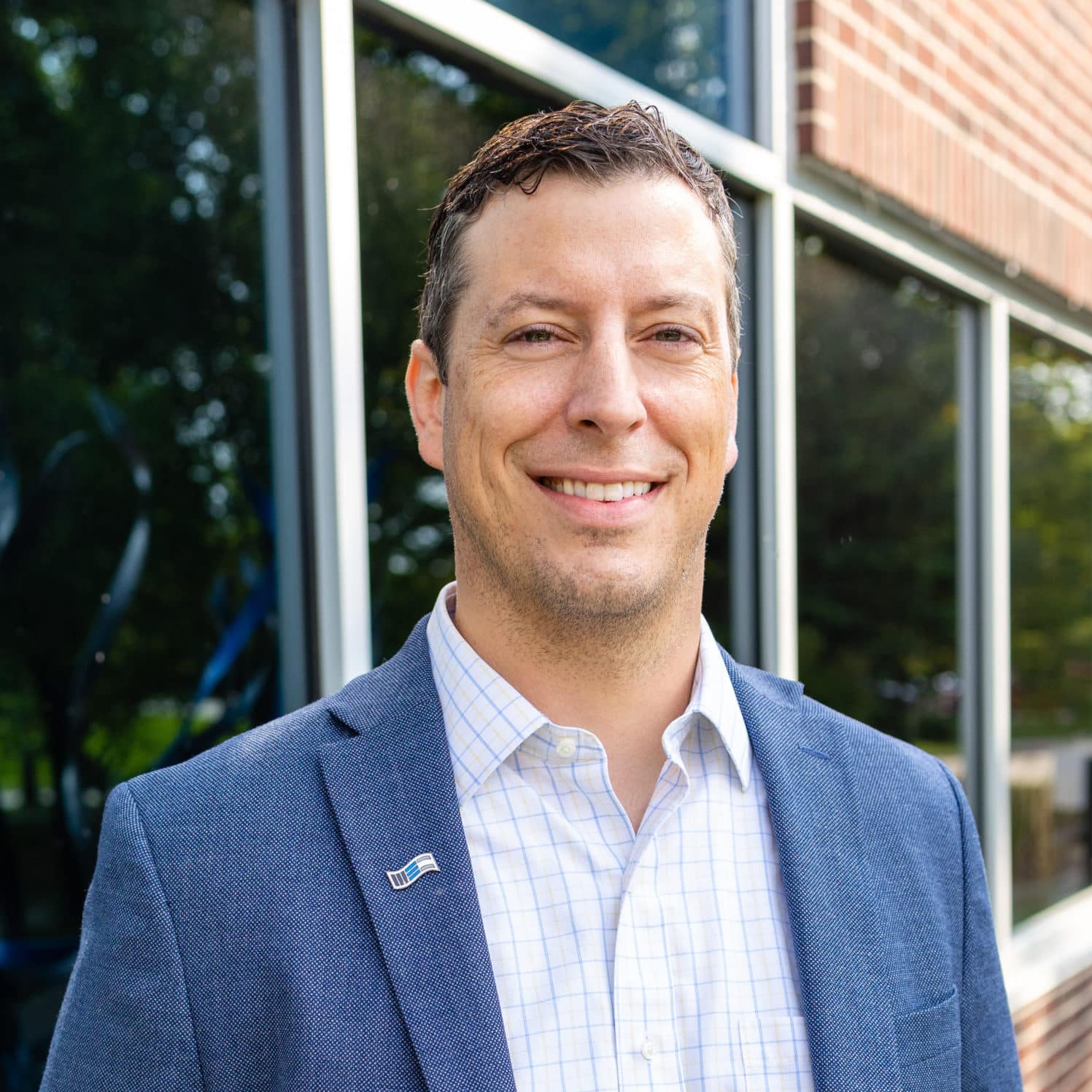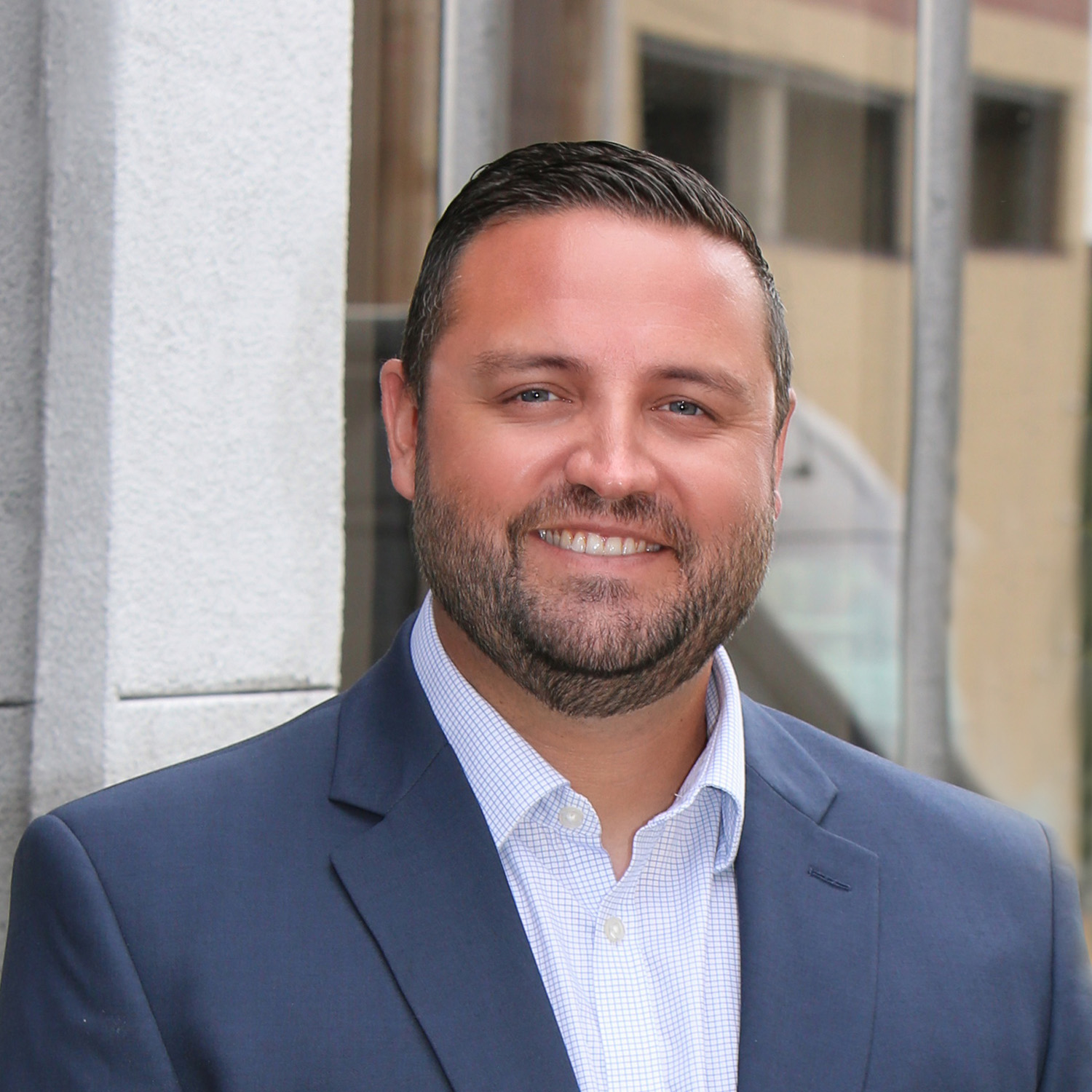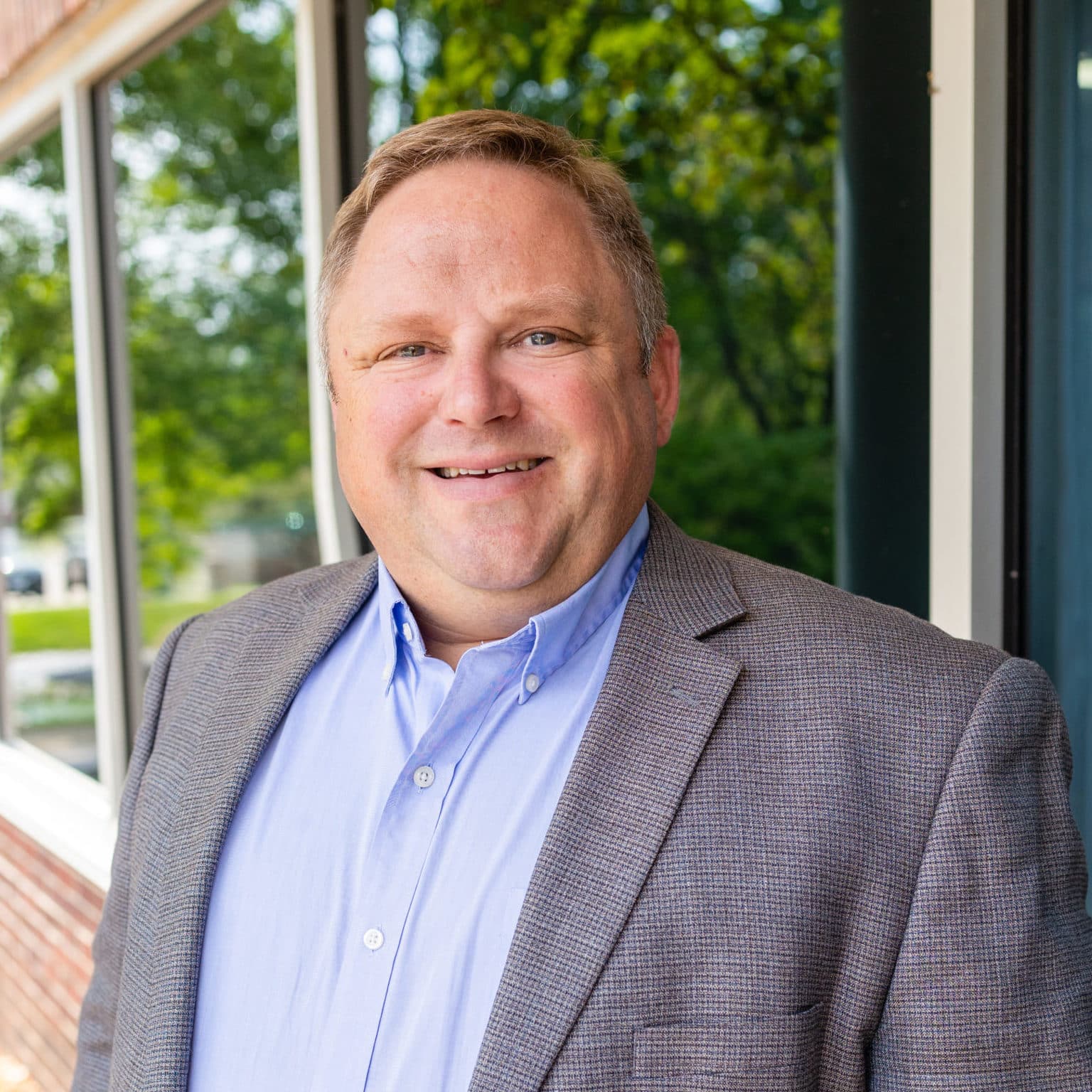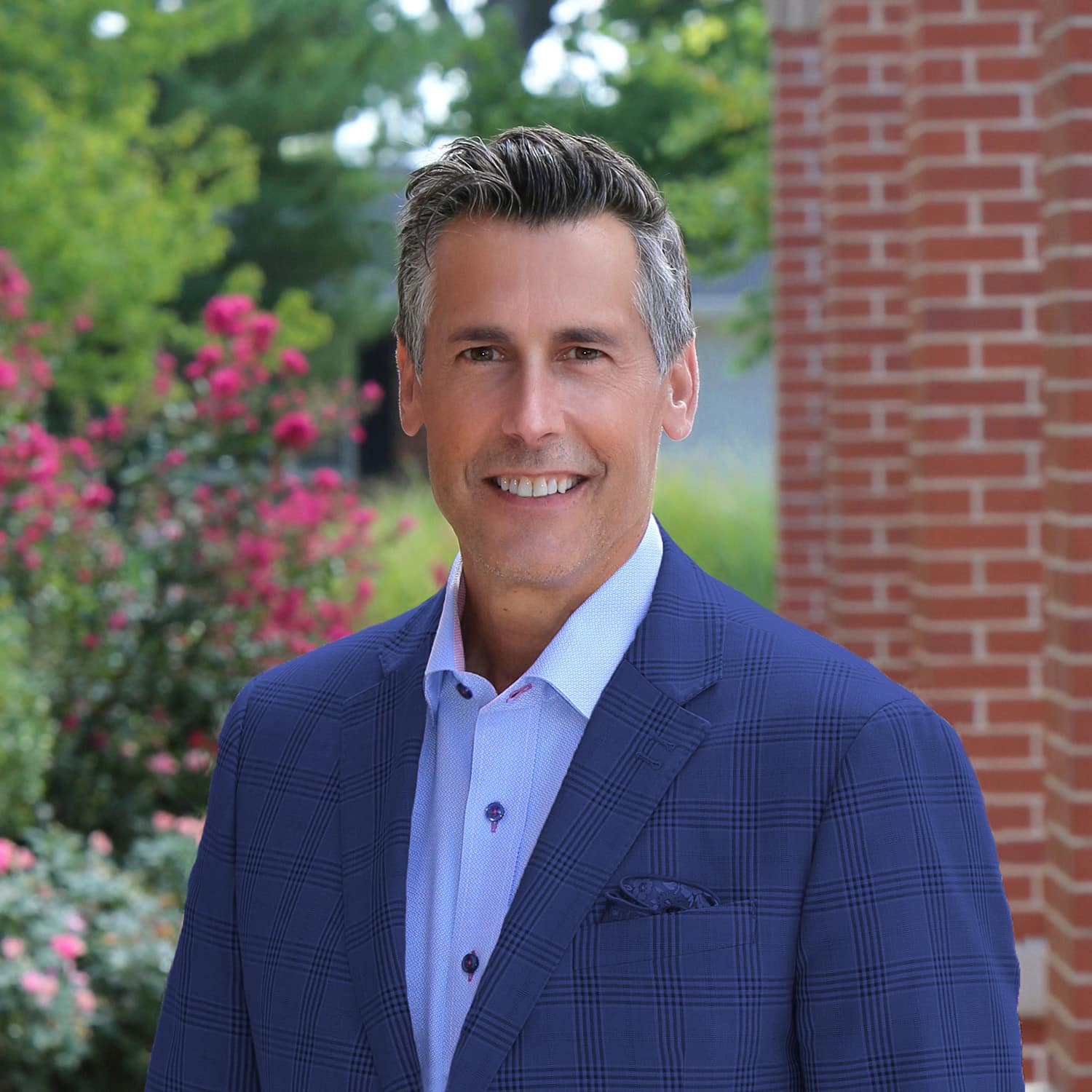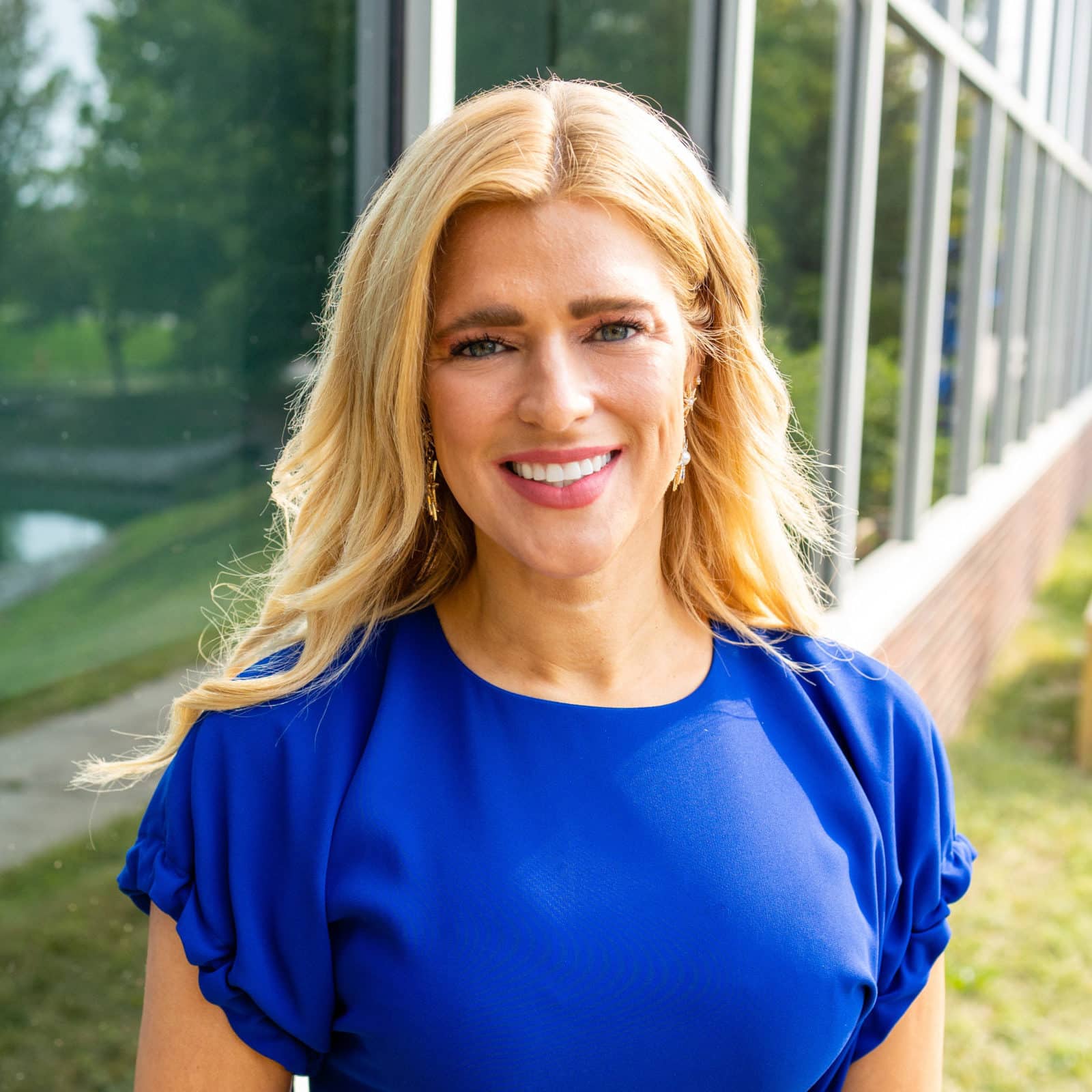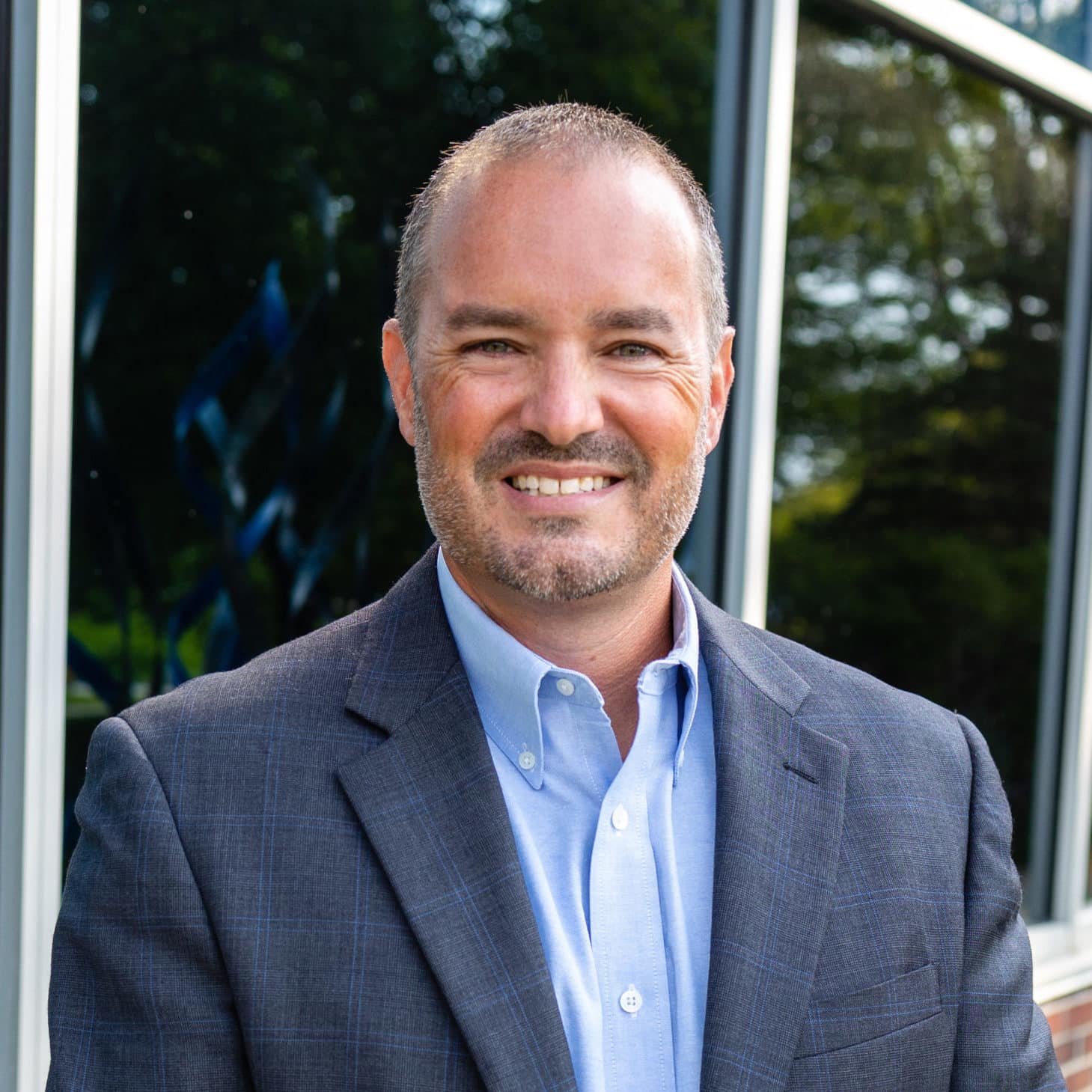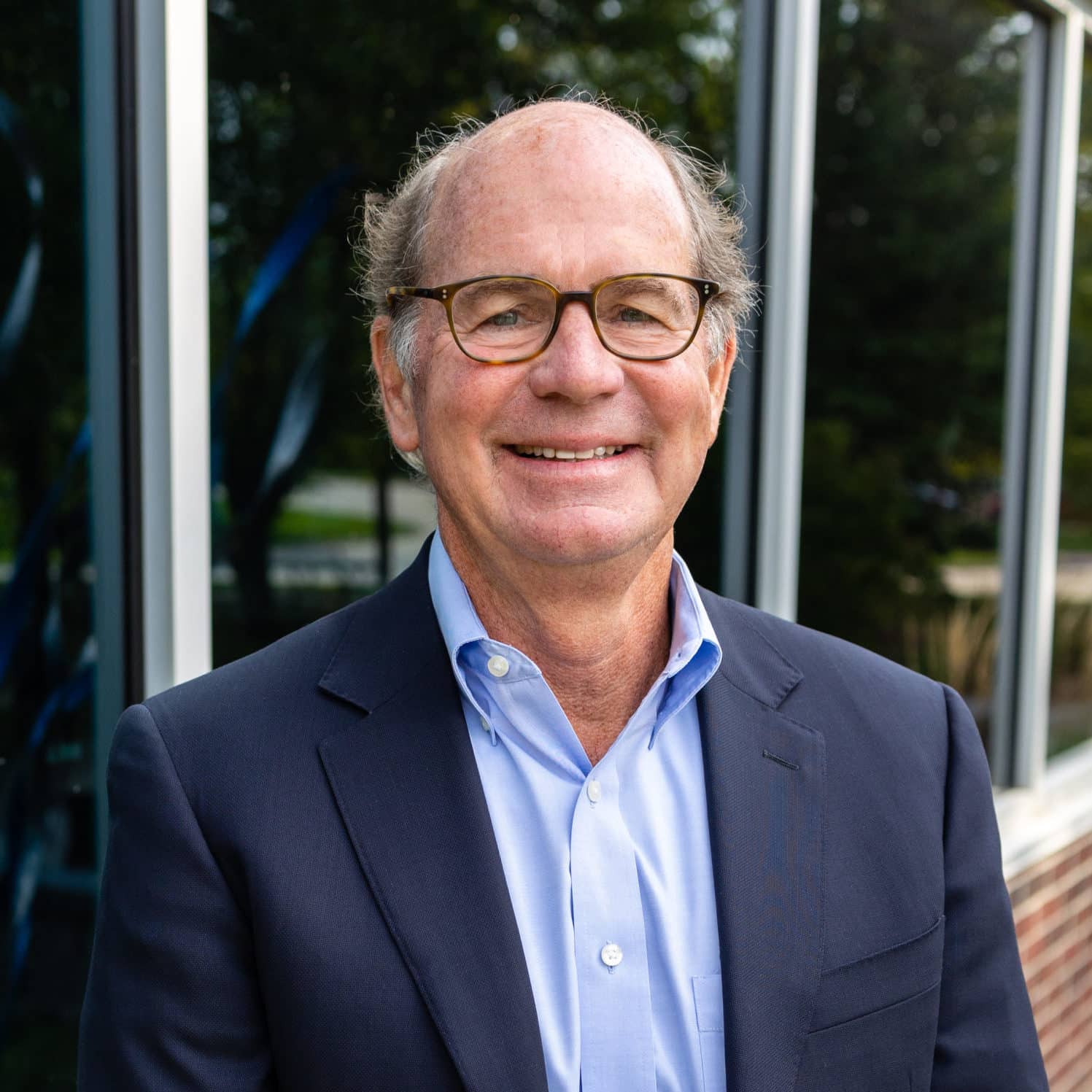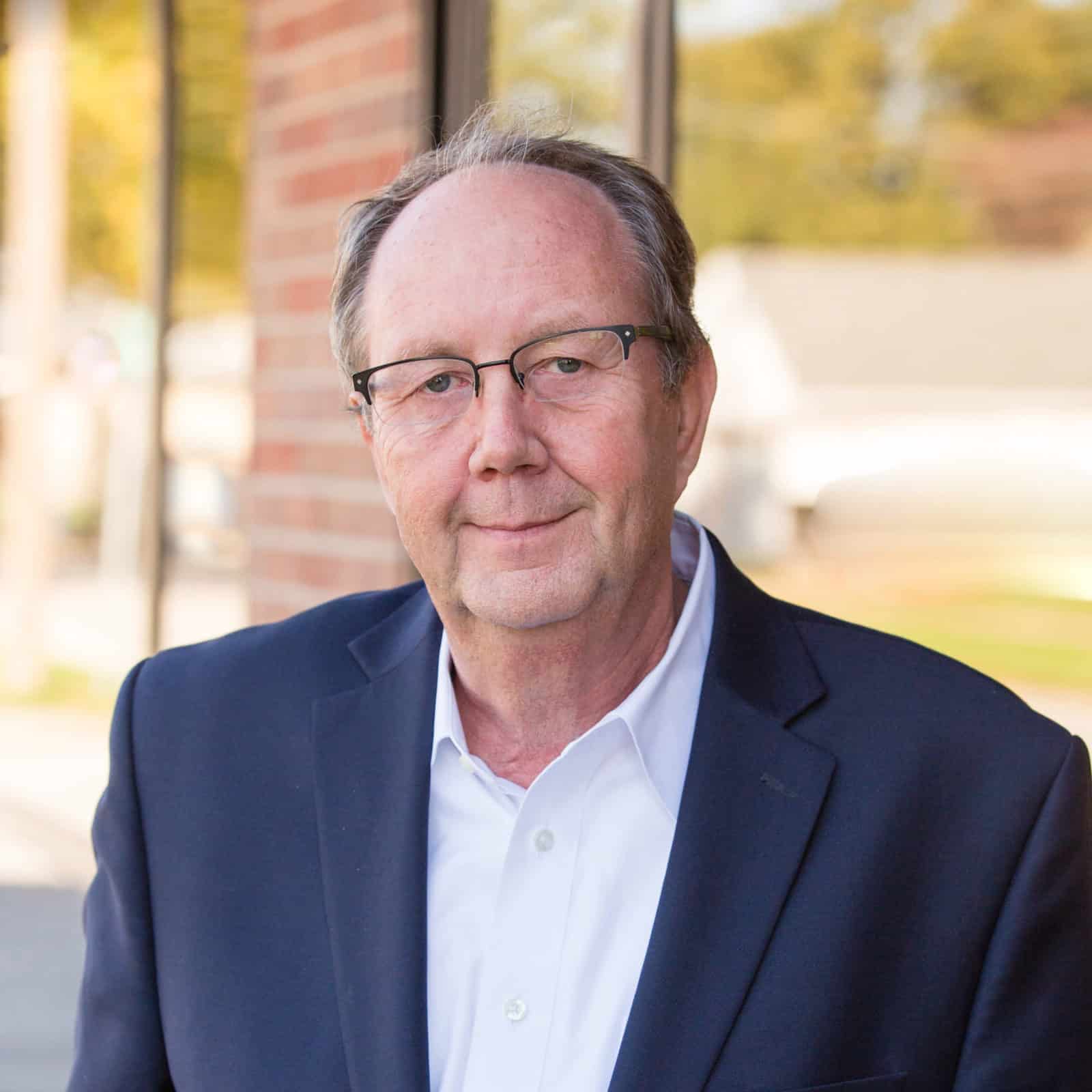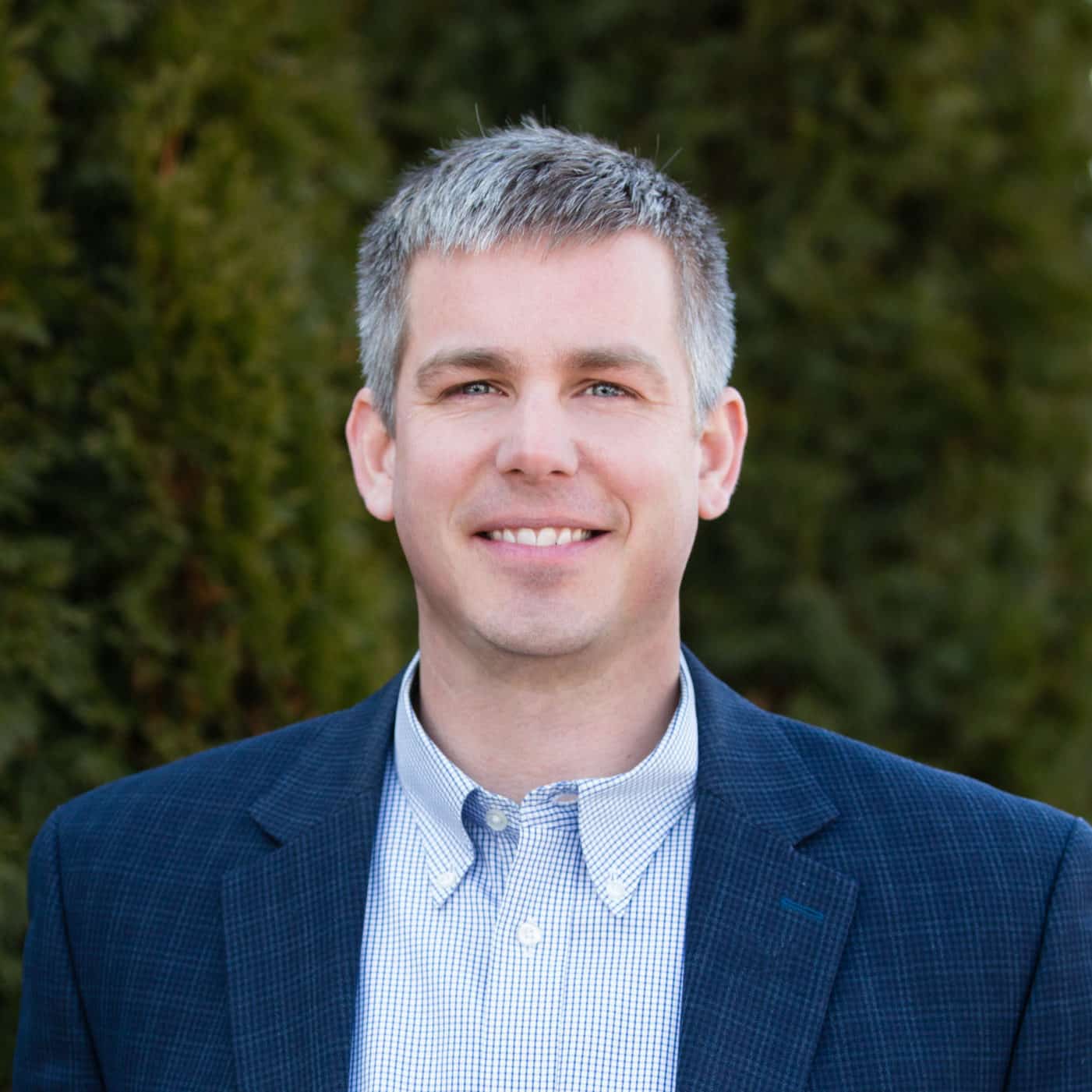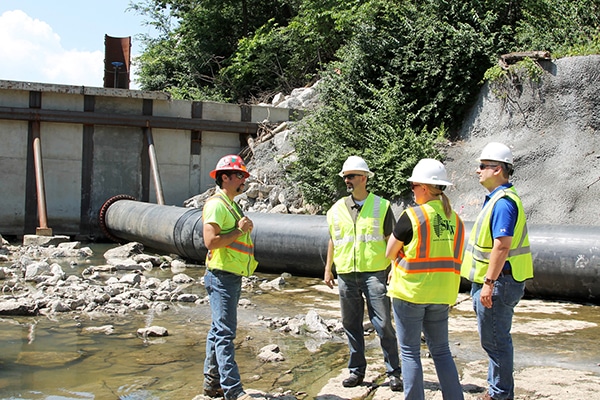
(From left to right) Phillips Hardy Quality Control Manager Kris Flath, and Team Leader Matt Eblen, Project Designer Kait Hanson and Project Manager Russell Schaefer visit on site at Turkey Creek to review the project progress.
To reduce flooding along Turkey Creek, the Army Corps of Engineers hired Phillips Hardy to armor the streambed and improve capacity as water flows into the tunnel under I-35 near Rainbow Boulevard in Kansas City, Kansas, but when they received the plans for the project, there was a note that simply stated “bulkhead to be designed by others.” The project couldn’t be completed without it.
As the project contractor, construction firm Phillips Hardy hired McClure Engineering Company (MEC) to solve the temporary bulkhead challenge and design a solution to hold back the water from Turkey Creek, allowing them to complete work in a dry streambed over the next 18 months.
“One of the biggest challenges was cost,” said Russell Schaefer, project manager. “Plus, the bulkhead needs to be in place for a little more than a year, but then it will need to be removed. We designed four possible solutions to meet these criteria from which the final one was chosen.”
The various options included the use of a concrete wall or a rock and grout wall; however, those solutions presented issues for timely construction and demolition, and were more costly than the final design.
The selected bulkhead design consists of vertical steel H-piles cast into concrete piers, with pre-cast concrete panels between them. Then, a layer of shotcrete was used to cover the front of the bulkhead to make it water tight. To further support the wall, there are steel braces from the top of the wall to additional drilled piers.
In order to convey water while the bulkhead is in place, there is a pipe within the bulkhead and runs along the side of the channel to the entrance of the tunnel. However, even with that pipe and a secondary pipe in place, during rains Phillips Hardy will have to pause work and evacuate the stream bed until after the rain has passed.
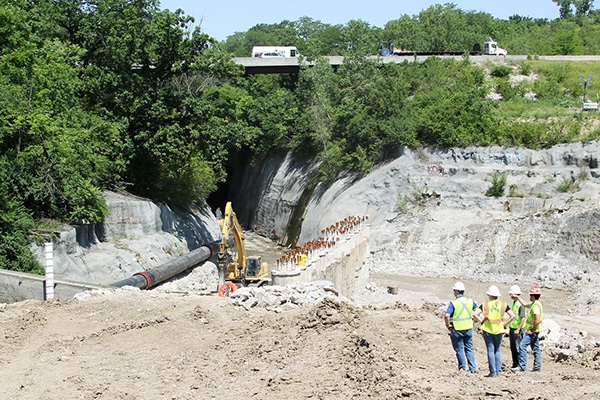
With the temporary bulkhead in place, Phillips Hardy is working to armor the Turkey Creek streambed and improve water capacity into the tunnel under I-35.
“The contractor is going to need to stay on top of the weather forecast,” said Schaefer. “The way the bulkhead is designed, any rain will cause water to go over the top of the wall, but a higher wall would have caused flooding concerns for the businesses around the creek upstream. There were very precise specifications for the design of the wall because of the flooding concerns in this area.”
Schaefer is experienced with temporary structural engineering solutions to allow dry construction to be completed in canals or streambeds. After Hurricane Katrina, he designed a large coffer dam to allow for the construction of a pump station.
“Generally, engineers are hired by cities, counties, municipalities or private developers, but there are times when a segment of a project will need an additional solution that’s not included on the original plans. As a firm, MEC is able to provide solutions for contractors and take on some of these unique design challenges,” said Schaefer.
This project is one of several that the Army Corps is in the process of completing along Turkey Creek to address flooding concerns and to reduce the impact of flooding in the area surrounding the creek.
“Turkey Creek is a major watershed coming into the downtown Kansas City area,” said Matt Eblen, stormwater team leader. “Almost 20 years ago, there was a major flooding event where some of I-35 was shut down. It’s important to address conveyance issues, such as this one, so the chance of flooding on Southwest Boulevard and the surrounding area is mitigated. Our design allows this improvement to be completed in a timely and cost-efficient manner.”
